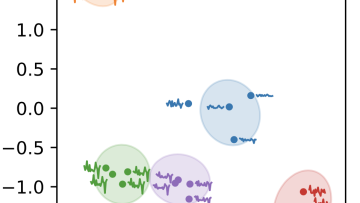Cohomogeneity one families in Spin(7)-geometry
Abstract
An 8-dimensional Riemannian manifold with holonomy group contained in Spin(7) is Ricci-flat, but not Kahler. The condition that the holonomy reduces to Spin(7) is equivalent to a complicated system of non-linear PDEs. In the non-compact setting, symmetries can be used to reduce this complexity. In the case of cohomogeneity one manifolds, i.e. where a generic orbit has codimension one, the non-linear PDE system
reduces to a nonlinear ODE system. I will discuss recent progress in the construction of 1-parameter families of complete cohomogeneity one Spin(7) holonomy metrics. All examples are asymptotically conical (AC) or asymptotically locally conical (ALC).



